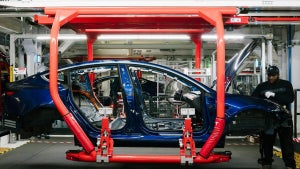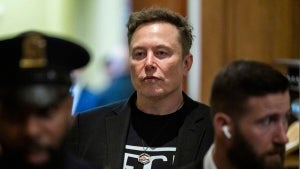Number Of Dc Fast Charging Ports Reaches 55,580 Amidslower Growth
A recent report indicates an improvement in the reliability of the U.S. DC fast charging network, driven by enhancements in non-Tesla stations

- April 27, 2025
- Updated: April 27, 2025 at 2:30 AM

The latest report from Paren has revealed a positive trend in the reliability of the United States’ DC fast charging infrastructure, with the Reliability Index climbing from 81.2 points in Q4 2024 to 82.6 points in Q1 2025.
This 1.7% increase reflects the impact of ongoing improvements in non-Tesla charging stations, suggesting that efforts to replace older hardware are paying off.
Bill Ferro, CTO at Paren, noted that the new entrants in the market are enhancing driver experiences with reliable equipment.
Charging 2.0: Focus On User Experience And Reliability In The Evolving Ev Market
As of the end of Q1 2025, the number of DC fast charging ports reached 55,580, an increase of 3,667 from the previous quarter. However, this growth is slower than the surge seen in late 2024, primarily due to seasonal weather patterns.
Notably, the average number of ports per station has risen to 3.9, indicating a trend toward larger, more efficient stations, although the Tesla Supercharger network remains dominant at an average of 13 ports per station.
While 59% of new ports adopted the Combined Charging System (CCS), the adoption of Tesla’s North American Charging Standard (NACS) is still in its infancy, adding only 104 non-Tesla ports in Q1 2025. Charging operators primarily employ fixed pricing models, with Time of Use (TOU) pricing being notably more common in California, where some areas have seen rates exceeding $0.60 per kWh.
The recent cancellation of the National Electric Vehicle Infrastructure (NEVI) program by the Trump administration poses a critical challenge for rural and low-income communities, potentially stifling growth in these areas.
Loren McDonald, chief analyst at Paren, emphasized that 2024 was a pivotal year that ushers in ‘Charging 2.0,’ focusing on enhancing user experiences and reliability over mere expansion, a crucial shift for the evolving electric vehicle market.
Latest from Agencias
You may also like

Volkswagen and Uber Join Forces to Roll Out Autonomous ID. Buzz Vans in the U.S.
Read more

What is a debloater and how it can improve your PC’s performance
Read more

With these 5 prompts you can know what ChatGPT knows about you
Read more

First-Year Decline in Deliveries Marks a Turning Point for Tesla
Read more

It seemed like an impossible enemy, but it was actually the smartest anti-piracy system we’ve ever seen in a video game
Read more

Rising Tariffs and Political Fallout: Tesla Faces Unique Challenges in the EV Market
Read more